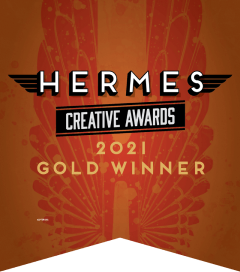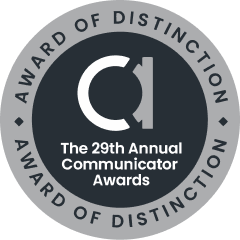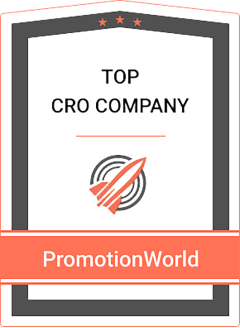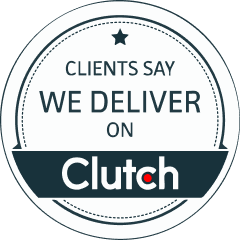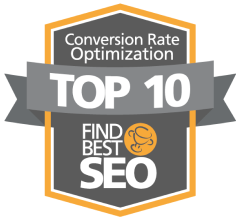Andrea Clatworthy | Head of ABM | Fujitsu
A good ABM strategy requires thoughtful planning, a systematic approach, but most of all – creativity. Formulaic outreach may have worked yesterday, but today is about personalization and genuine connections, some at scale. Join us as Andrea Clatworthy, Head of ABM for Fujitsu, shares guiding principles and inspiring anecdotes for identifying the problems we’re trying to solve and engaging prospects in genuine and relevant ways.
Transcripts
Laura: Hi there! Glad you’re back for another episode of the CMO’s Guide to Everything. Today, we’re talking about creative approaches for account-based marketing. Joining us is Andrea Clatworthy. Andrea is the global head of account-based marketing at Fujitsu and has been named one of B2B Marketing’s top women in tech. One of the keys to a successful ABM strategy is the creativity with which you reach out to target accounts and Andrea has that in spades. She’s got some of the best anecdotes of anyone I’ve heard in this industry and some great insights into how to rally support within your own organization and keep the energy levels up. Let’s go ahead and jump in.
Good morning, Andrea! So, let’s start out by talking a little bit about the partnership of sales and marketing. For an ABM strategy to really work, you’ve got to really facilitate good communication between these, historically, very siloed departments. How have you found success here?
Andrea: Well, I don’t think it was me that did that. I think it was the ABMers, it’s about how they were working with the account team, essentially, who they work with. Now, you could argue that enabled a bit of that. Maybe I did. Well, I must’ve done, right? Because, I trained them. But, they done it.
So, it’s been them. So, there has been some instances where it hasn’t worked, obviously, because people are human beings. Right? So, if you’ve got an account manager that’s saying, “I don’t need this.” Well, okay. So, you know, fine, off you go.
We don’t, you don’t have to have ABM. Or there’s been an ABM-er that hasn’t got on with the account team, for whatever reason, you just swap people around. So, yeah. So, to answer your question, it’s not me. It’s them. It’s the awesome ABMers that have made that work.
Laura: I found that’s true, a lot. The team has so much to do with it.
Andrea: That marketing here and sales over there model, that can’t exist forever. You know, they’ve got to come closer together and you see that in pockets but for this one to an ABN, it really does work that way. And I think that’s brilliant, proper team effort, proper team effort, not this chucking stuff over the wall and hope it sticks.
As marketeers, we tell each other this all the time, “Oh, I created all these leads and nothing happened with them.” Well, don’t then. They’ll create the leads. If no one’s going to use them, don’t create them, because all you’re doing actually, potentially, is disappointing a customer. Now, if there’s a customer spent some time with you, whatever scoring mechanism you want to use, whether it’s minutes or whatever, then actually they’d really like to have a conversation or buy from you but the sales guy never continues that piece of work, then that’s lost. You’ve lost the customer for life, probably, because they’re going to feel let down. Engage in now, try to engage with them, have them engage with me. So that’s why I love the whole ABM thing. So I guess that’s what I’m passionate about, really, is sales and marketing working together and that piece about really getting to know the customer.
Laura: So, to really get into the heart of what we’re talking about today, ABM is more than just about creating new content or a fancy new landing page. It’s about really tapping into creative approaches to target accounts. What sort of creative, out-of-the-box things has your team come up with that have worked?
Andrea: Oh, where do you start? I think, the starting point of being creative is to think about not what you’re trying to sell, but what problem is your customer trying to address? So, there’s a really classic one here, right? So nobody buys a drill and a drill bit because they want a drill and a drill bit, they buy a drill and a drill bit, because they want a hole.
So, it’s thinking about what problem are you trying to solve? And if you come at it from that perspective, then instantly, you’ve stepped away from the technical and the features and benefits of your solution and you’re thinking about what’s the problem that your customer is trying to solve. And then, go bonkers with the creativity and that bonkers-ness can be in the narrative, the story that you tell, the visualization of it, tactics that you decided to use, it can be right out there.
So, we use a bit of a methodology that we use to help us with this, called human-centric design and we’ve got a load of co-creationists that are trained in this process. So, when we get really stuck, we bring them in and they take us through a structured process of almost thinking outside the box. And you kind of get to some really cool ideas.
But other creative stuff, it just happens, you know? So, some of our people are naturally just really creative and I’m probably one of those. And, quite often, people will ping me and say, “Can I pick your brain for five minutes? I’m trying to land this message. What can I… Give me some ideas on how I could do that?”
A good one, recently, was we were bidding into a retailer and that retailer is very, very conscious around the sustainability story. So, they weren’t buying sustainability from us. They were buying some tech right? But how are we going to differentiate ourselves? So as a work, they’ve got a clear sustainability story, we’ve got one as well.
And this particular, so I’ve got a strict RFP process and buying cycle, and that included face-to-face meetings and a big backbone type of thing. Then, we come and pitch kind of thing. So, not all customers do that anymore, but this customer did. So right, if we’re going to do that, then let’s leave behind something more than just the deck in hard-copy, just something really small that just makes them think that we’ve thought it through because we had thought it through. So what we left them actually was honey, that our bees had produced.
Bees, in beehives, who produce honey at one of our campuses and they’re tended to by our staff. It’s just a nice thing to do and they create a ton of honey so they jar it and label it and we made some, especially for them. So, that was a piece of us we gave to them. So, just a little jar with a honey thing, and the customer just loved it. Because nobody else from the tech industry had used that line of thinking. So, little things like that, really. The most bonkers creative thing I did three years ago now, well, nearly four years ago, no, it was three years ago. I created a Guinness World Record with our customers. I don’t know if you’ve heard this story.
Laura: Yes – I saw this briefly come across my news field but it looked so interesting. What happened there?
Andrea: The story is, every year we have a big customer event, so 10,000 people, or whatever, and for those customers that we care most about. So, our ABM customers, I run a VIP program for them, so they get white-glove treatments through that event. So personalized agendas, exec meetings, those sorts of things.
And on the evening before, it’s a two-day event, on the evening before I bring them together for a really nice dinner. So, not a selling environment, really nice with our very senior execs. We have an after dinner speaker around whatever the topic is for that, for the event that year, this particular year, the event, the topic for the event was, digital co-creation.
Okay. So I’m thinking, how can I do something that will land that message in a really memorable way? And then to the life of me, I couldn’t think of an after-dinner speaker. And, actually, these people that come to our dinners they go to a lot of dinners, right? So, I wanted to think of something different and I wanted it to be a surprise. So, there was no prep required, on their part, they could just rock up. So, what I decided to do was to enable a digital co-creation thing, and we landed on creating a mosaic using our technology. So we, we produce product, as well as service. And we’ve got an iPad equivalent for, for the industry, not for home use. So, I’ve got 220 of those, and enabled every single one of them to have a different piece to the mosaic digitally on it. And so, what our customers did was put these in a grid to make the mosaic, and then it had to run a video and they had to move and have music and that imagery and 90-seconds. So, very strict rules from the Guinness World Record people. And they are awesome, by the way, they are brilliant.
The Guinness World Record people, love them. So, they have customers for coming for a nice dinner. So it was a lovely place. It was the BMW Museum in Munich, lovely venue, really, really slick and smart.
So, that in itself was a nice thing. So, they were eating amongst the cars. And then, so that they’d eaten, and then, we landed this on them and they loved it. So every single customer got to put, at least one, tablet in this grid.
Most of them did two or three, and it’s not in the video, but every one of these tablets had a number and a letter combination on it. So, that’s there they went in the grid. So, I had them all in there and could it didn’t quite work, first of all. So, lots of tension and all this stuff, and then it works. It was just brilliant. And the Guinness World Record lady said, “You have achieved a brand new Guinness World Record,” cheers and everything. And people were tweeting about it and all sorts. So, at the end of the evening, they had every single person in that room had a Guinness World Record. And they were part of that. And that was just awesome. And then, because they knew what number and letter they had on their tablet, pretty much everyone bought one.
Laura: Oh, wow. If I were a part of that, I would have bought it!
Thank you. You would, right? Because that’s the tangible piece so of your Guinness World Record. So, that was fab. So, I love doing creative things like that. Sometimes creativity is not the right thing to do, and you need to dial it down. But, quite often, I think human beings are human beings, right? You want to engage with them on real stuff or stuff that has an emotional response, or it makes them just think a little bit differently.
Laura: Yeah, absolutely. So, in conversations with your executive leadership, how do you go about setting expectations and pitching ideas like that?”
Andrea: Okay. So, this is such a good question, Laura, and people ask me this quite a lot. And I don’t know is my honest answer. When we first rolled out ABM and we started in the UK and the challenge was, “Andrea, what are we going to do differently?” Next year, we’re marketing, right. Standard challenge, right?
Laura: Right.
Andrea: Right. So, I thought about it and, a bit like what you’ve done, sit back a little bit, just really reevaluate what you’re going to do. I said, “I know, what we should do, is we should stop all this demand gen stuff, where the leads never get followed up and pivot our activity to do account-based marketing across the organization.” And we always did some, we didn’t because we have lots of big customers. Right. So, naturally you do some of that.
We didn’t have any governance. You know, we didn’t have any policies or standards or anything. So, I was like, right, let’s do it properly and let’s invest in that. And I said, “I think we should do this. And these are the steps I’m going to take. And this is the investment we need for training. And this is how we’re going to enable it.”
And everyone went, “Okay.” And that was that. And then when I invented this VIP program, honestly, I said, we should be treating our customers better. And now I need to get a space. I need access to their site and everyone kind of went, “Okay.”
And then when I said, “We should do this Guinness World Record.” Everyone went, “That’s a really great idea. Okay.” So, there’s been a lot of that, I think. And I don’t know, I don’t know why people say okay. Whether it’s, I may be able to articulate the benefit. Not sure I can. Or maybe it’s just that I’m a great motivator. I don’t, I don’t know. I really, I genuinely don’t know. Well, or I’ve just been super lucky.
Laura: Well, I would say that probably a history of success has a lot to do with that. You know, when you get your first couple of wins, even if they’re crazy ideas and they work, you suddenly find yourself with a lot more latitude to suggest crazy things and have people go, “Okay.”
Andrea: It’s true. Yeah.
Laura: Are there any other points that you really want to bring out or to hit on?
Andrea: Well, a question that I often get asked, by people who are starting their ABM program is, not how do you pitch it, initially, but how do you keep the momentum going? Because, actually, what tends to happen is you start and then, you kind of don’t see anything for a little while, you know?
So, what do you do to keep the energy levels up, and to keep your stakeholders engaged? And what I say is that every possible milestone, every possible little nugget of success, share it. And that might be a simple thing. Like you’ve managed to engage over LinkedIn with Bob, who you’ve not managed to get by another means. You go, “Yay, you’ve done it, you know, brilliant.”
Or it might be that, you know, we’ve nurtured somebody through to a real opportunity, or it might be that we’ve created an awesome video hero piece for this specific customer. So, whatever it may be, celebrate it. And when you can get to the point where it’s not your ABM-mer promoting it, but it’s your account manager saying, “Look at the ABM I’ve done.”
Laura: That’s very good advice. Well, Andrea, we appreciate so much you sharing your creatives approaches. I know I’ve found a tremendous amount of inspiration for the next big ideas. Thanks so much for joining us and I look forward to speaking with you again soon!
Andrea:Thank you. Have a good day. Cheers, Laura. Bye, for now.








